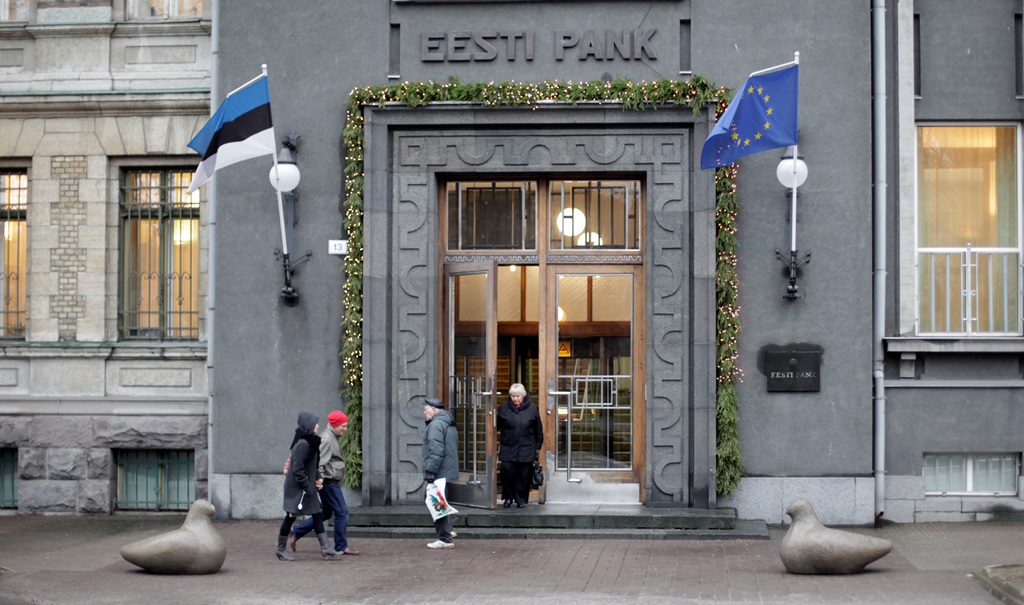The Baltic States and Russian Money Laundering

Banking Scandals
In February 2018, the U.S. Financial Supervision Authority for Financial Crimes (FinCEN) accused the third-largest Latvian bank, ABLV, of money laundering. FinCEN also suspected this bank of links with UN-designated entities involved in the purchase or export of ballistic missile components to North Korea. The bank supposedly also tried to corrupt Latvian officials and politicians. As a result, the European Central Bank (ECB) demanded ABLV’s license to operate be suspended.
The mechanisms of depositing and transferring money in Latvia have been most often used by people from outside the country—over 40% of all ABLV clients (mainly from Russia, Ukraine, and Azerbaijan)—to make otherwise illegal transactions. In February 2018, the Latvian anti-corruption service (KNAB) detained the president of the Central Bank of Latvia, Ilmārsa Rimšēvičs, on charges of accepting a €100,000 bribe.
At that time, a money laundering operation involving Danske Bank in Estonia was also revealed. Suspicious transactions from 2007-2015 amounting to about €200 billion included payments related to nearly 10,000 clients in a group of non-residents (some banks consider as non-residents people who reside in Latvia or Estonia, including those who do not have citizenship of those countries, or those having connections with foreign countries, e.g., in the form of real estate).
Those kind of transactions comprised about 40% of the volume of the financial operations of the bank. As a result of the allegations, the head of Danske Bank in Copenhagen, Thomas Borgen, resigned in September 2018, and the headquarters bank increased its capital requirements, designed to secure the bank during a crisis.
Specificity of the Baltic Banking Systems
The financial sector of the Baltic States became an attractive market in the 1990s, especially after the countries joined the EU. Their economy, which on average grew about 9% of GDP per year in 2004-2007, was another key factor. The finance market was dominated by foreign banks, mainly from the Nordic countries: Swedbank, SEB, Nordea, Danske Bank, DNB. As a result, Lithuania, Latvia, and Estonia have a well-developed banking system.
At the same time, the large share of foreign banks makes the industry in the Baltics vulnerable to changes in the global economy, especially in an economic downturn, such as the international financial crisis of 2008-2009, followed by the collapse in the euro area, which resulted in the sudden withdrawal of foreign capital from the Baltic States. At the same time, their banking sectors faced threats related primarily to the handling of electronic foreign financial transfers that were being used to launder money.
In addition, the significant portion of the Russian minority among the residents of Latvia and Estonia (up to 25%) resulted in a large group of non-resident clients of banks, which had prepared specially targeted offers for them. Everyday use of the Russian language also facilitated these Russian investments.
The Essence of the Mechanism
Although financial irregularities in Baltic State banks had been noted earlier, the scale of the fraud has increased since 2013, probably related to changes in Russian foreign policy (especially the aggression against Ukraine that began in 2014) and the imposition of sanctions on Russia.
An audit carried out in 2018 by the Danish independent law firm Bruun & Hjejle confirmed that the majority of the suspicious transactions in Estonia were carried out from areas of the former USSR, including Russia. They were also carried out by representatives of the Russian elite, including members of Russian President Vladimir Putin’s family (particularly Igor Putin) and people associated with the Federal Security Service (FSB) through the Latvian ABLV. In turn, there was probably a flow of money related to people and activities associated with the former Ukrainian President Viktor Yanukovych.
The Danish investigation also identified 177 clients who had received suspicious payments through, among others, the Latvian bank Trasta Komercbanka. Most of these “clients” were limited partnerships or limited liability companies registered in the United Kingdom or in countries regarded as tax havens (British Virgin Islands, Hong Kong, Cyprus).
The Baltic States were not only an outgoing source of the suspicious sums but also receivers, including Russian money moving between Latvia and Estonia. The vast portion was subsequently transferred to third countries, either as direct payments, or as payments on fictitious invoices. The funds that had passed through the banking system of the Baltic States were then put into circulation through legal means (including within the EU), which made their original sources difficult to track. Russia probably used the funds to lobby the energy sector, finance the political activities of pro-Russian organisations, and for carrying out disinformation activities.
Conclusions and Perspectives
The banking scandal in Estonia and Latvia confirms that there are entities and individuals associated with the authorities of the Russian Federation who use the banking systems of other countries for money laundering. Despite attempts within the EU by the authorities of the Baltic States to establish a banking union and to seal the banking system in the euro area, the practices in the region means these states are still highly susceptible to these suspicious activities. At the same time, the revealing of the mechanism used in the Russian schemes increases the possibility of preventing its use in the future.
For the Baltic States, where foreign investment and the developed financial sector are crucial for economic development, publicizing the money-laundering mechanism may result not only in a loss of international image but also weaken their competitiveness. This is particularly important for Estonia, which for years has been building its brand based on digitisation and transparency in business. The scale of the abuses challenges these assurances. The Estonian government has presented a package of reforms to seal the banking system. It also supports strengthening financial supervision and has called for closer cooperation at the EU level. The Latvian authorities, have ensured their readiness to cooperate with the U.S. administration, to combat the effects of the scandal and prevent such situations in the future. They also promise a significant reduction in the share of capital investments made by non-residents.
The scandals have motivated other Member States and EU institutions to counteract similar illegal practices. The European Banking Authority promises to increase the accountability of national supervisory authorities and favours strengthening cooperation between the states. It also indicates the need for strict adherence to the recommended security procedures.
Moreover, provisions under the current 5th AML Directive of 2018 favour increased control. The goal is, among others, ensuring the transparency of the ownership structure of enterprises and trust funds and increasing the supervision of suspicious transactions with high-risk third countries (e.g., Ethiopia, Iran).
At the same time, the European Commission, in order to unify the definition and sanctioning of moneylaundering offenses, has developed another version of the document, which the European Parliament and EU Council approved in June 2018. The 6th AML Directive specifies, among others, a list of “source” moneylaundering offenses. It also imposes more obligations on businesses to implement monitoring systems.
The EU actions are aimed at increasing the security of banking systems, which for Member States means the need to intensify legislative work and adapt internal regulations to the latest risks associated with money laundering and illegal financial transactions. It is in Poland's interest to support these EU initiatives, which focus, among others, on securing virtual transactions.


